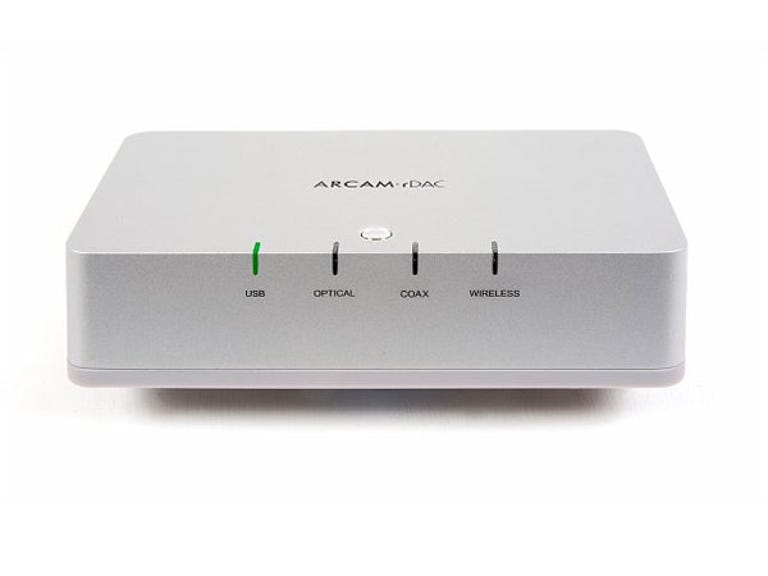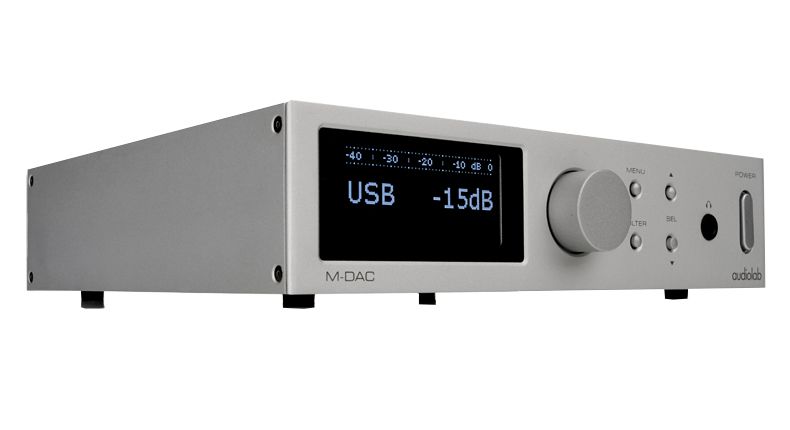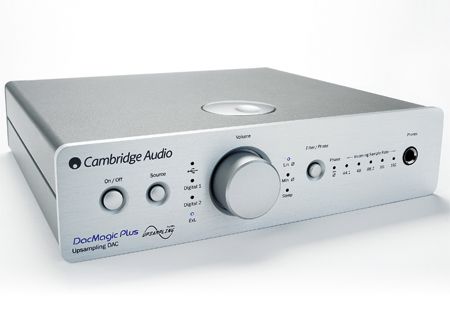The decade of the 1990s was perhaps equally as significant for digital audio as the decade before it, because it witnessed the first introduction of high-resolution recording and playback. The next wave of DVD players that followed towards the end of the 1990s were finally able to deliver 24-bit, 96Hz stereo, whereas Compact Disc had a ceiling of 16-bit, 44.1kHz operation. Despite the fact that this was hugely symbolic – establishing the groundwork for today’s hi-res mania — there were virtually no commercially accessible digital-to-analogue converters to play it. But then, seemingly out of nowhere, a new name surfaced, unveiling the first hi-res competent domestic DAC. The dCS Elgar was able to handle 24/96 PCM at first, and its bespoke signal processing engine set it apart from all other DACs on the market.
Data Conversion Systems, founded in Castle Park, Cambridge in 1987, took a tortuous road to the hi-fi business. dCS began off as a defense contractor, unlike other British businesses from that famed city of dreaming spires, which were founded by audiophiles to make hi-fi equipment from the start. Its specialty was number crunching, as the name implies. Mike Story, the company’s founder, was a brilliant but temperamental individual who, according to folklore, studied Physics at Oxford since the university didn’t offer an electronics study…
Story went on to pursue a PhD in electrochemistry before launching dCS with the help of venture capitalists and several bright Cambridge Consultants employees. Ferranti, Marconi Avionics, and British Aerospace were among the high-powered defense businesses that soon awarded the company major contracts. Its area of expertise was radar, for which it developed some fairly sophisticated digital signal processing technology. This resulted in Harrier jump aircraft being used in Bosnian war action in the early 1990s. According to the tale, the RAF’s radars proved to be extraordinarily powerful, allowing them to intercept Serbian helicopters better than the US Air Force F15s flying beside them.
Early in its corporate life, the end of the Cold War required a shift in the manner dCS paid its costs. Those lucrative aerospace contracts began to dry up, so the company shifted its focus to the broadcast world, where it worked on a variety of digital audio projects for the BBC, for example. Mike Story began to shift the company’s focus to audio and apply its DSP knowledge to the professional recording industry. The first dCS 900, an analogue-to-digital converter based on the company’s radar work for the Ministry of Defense, went into production. It was the world’s first 24-bit ADC, and it featured the Ring DAC, the company’s unique, completely custom processing ‘engine’ that is still used in all of its digital converters today.
In pro-audio circles, the 900 generated quite a sensation. Bob Ludwig, a well-known music producer, was an early and vocal supporter of the brand, as did Tony Faulkener, a well-known recording engineer, and Bert van der Wolf of Northstar Recording. The dCS converter, they said, sounded significantly more detailed and immersive than competing systems, which all employed proprietary circuits. dCS was so pleased with the response that they decided to create a matching DAC, the 950. This was the world’s first 24-bit digital to analogue converter, and it received rave reviews and a slew of orders from recording pros.
Surprisingly, the dCS 950 didn’t just catch on with studio hacks; it also caught on with many in the high-end hi-fi community. With the installation of a proper transport, it could, of course, play 16/44 silver discs, which is exactly what a number of well-healed Japanese audiophiles did with it. The company’s distributor in the Land of the Rising Yen was especially zealous, hawking the product to recording experts, who then informed the specialist hi-fi press. It was once a niche product, with the first dCS DAC being both pricey and difficult to operate. It came in an unattractive box with rack mounts, but once turned on, it made music in a way that no other competitor could, thanks to its custom DAC and digital filter design. The dCS 950 began luring well-heeled Japanese audiophiles to open their wallets as the money from its consultation job dwindled.
By the mid-1990s, there was no lack of standalone DACs, so dCS’s decision to release its first domestic hi-fi device and only its third audio design was a bold one. The 950 was “an ugly box,” according to the company’s previous executive chairman, so the Elgar prioritized a more visually pleasing appearance and increased ease of use. The company, which was founded in 1996, produced just the correct product at precisely the right time. “We had believed that the only people interested were recording studios,” Mike Story says, “but when the 950 came out, we saw there were commercial applications as well.”
Perhaps unsurprisingly, dCS enlisted the help of a world-renowned industrial designer with a long history in hi-fi design. Allen Boothroyd, a Cambridge-based designer, was enlisted to style the casework. He is arguably most known for his forty-plus years of Meridian hi-fi designs, as well as the award-winning Lecson AC1/AP1 pre-power amplifier. He also designed the classic BBC Microcomputer along the way. According to one dCS source, the goal was to “take the guts of the 950 box and turn it into a high-end consumer product…”
Despite the fact that this appeared to be a simple task, Elgar had some difficulties. It was planned to make its debut at the 1996 New York hi-fi expo, but the first copy was destroyed in transit. As a result, the company was forced to exhibit it on a static display plinth, which was somewhat humiliating. The new DAC, on the other hand, quickly became the talk of the hi-fi world. The dCS show demos were the talk of the industry; they used 900s to concurrently record music in 16/44 and 24/96, and then played it back with 950s or the new Elgar, letting people to hear the difference between CD-quality and hi-res digital audio for the first time. There are numerous accounts of people being astounded by what they had just heard. This was a watershed year for the company, as it shifted its focus entirely to hi-fi manufacture and relocated to a new facility just south of Cambridge. Elgar was the right product at the right moment, and it was ideal for use with the new DVD format.
The unit, like any other Allen Boothroyd design, has a visual ‘economy’ that makes it very appealing to the eye, even if it is no longer fashionable. It’s finished in a two-tone grey that’s very nineties, and it has a dot-matrix display in the center that’s far more informative than rival designs of the time. On the other side, near to the Volume/Balance control knob, chromed pushbuttons offer Standby, Display, Phase, De-Emphasis, plus Input and Mute (which gives 0.5dB and 1dB steps respectively). The set-up menu is accessed by pressing the Display and Volume/Balance buttons together. It’s easy to use because it’s clean, straightforward, and self-explanatory. There are two AES/EBU through XLR, coaxial, and BNC inputs on the back panel. There are switchable voltages on both balanced and unbalanced analogue outputs. The input receiver can be switched between ‘Analogue’ and ‘Digital’ modes, which reject jitter from data sources with poor clock stability.
Every competitor to the dCS Elgar employed bought-in digital conversion and/or digital filtering chips, with the exception of Pink Triangle and DPA DACs of the time. Elgar was essentially a digital signal processing computer in a box, and it still sounds great by today’s standards; it’s a revelation when contrasted to its mid-nineties competitors. It’s significantly quieter than its contemporaries when played back at 16/44 from CD, with a lot more detail and a beautiful sense of transparency. The Elgar isn’t warm or euphonic in tone, but it’s never harsh and lacks the ‘metal-plated’ upper midband that many digital converters had in the 1990s. It’s also much more energetic, with a deliberate rhythmic flow that wasn’t usual at the time. Soundstaging is a revelation, with a broad left-to-right range and a depth perspective that most people haven’t experienced with silver disc. Elgar doesn’t like bad recordings, but if you get a good one, it lets its full grandeur shine through.
It’s much better with high-resolution program material — I can picture how incredible it must have been to hear your first 24/96 digital music on it. Everything it does well on CD is improved – the soundstage expands and deepens, the music flows more naturally, the bass is better defined, the midband is clearer, and the treble is silkier. This classic DAC doesn’t ‘gild the lily’ musically — that is, it won’t make a terrible recording sound nice – but it does offer excellent sound when used with high-quality source material. Of course, several high-end modern DACs now perform better – not least recent dCS designs (which run a much-improved version of the Ring DAC) – but Elgar can still hang with the big boys today and look good. It’s a wonderful second-hand buy, especially considering that a nice example can be found for as low as £1,000 if you look hard enough – and that dCS can service it and get it working to original specifications. Collectors will adore it, as it is the epitome of a classic hi-fi DAC.







